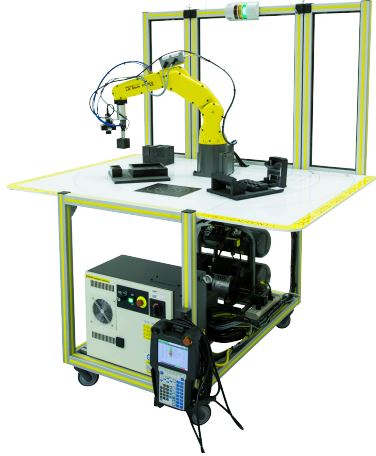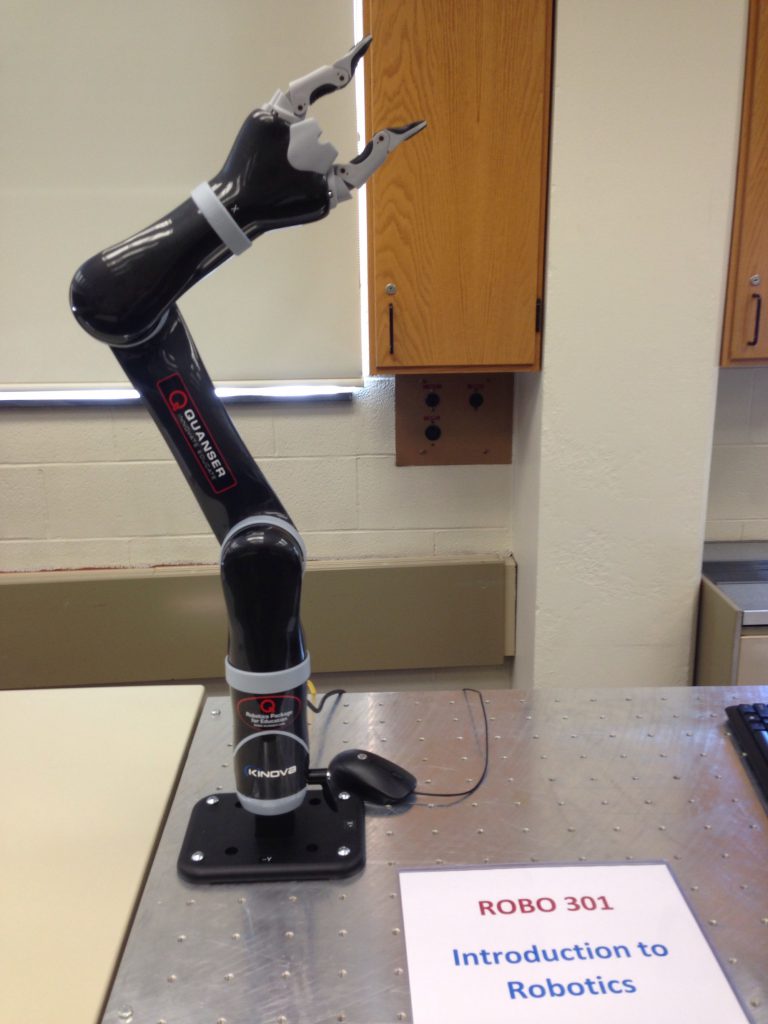New: Intro to Robotics Class!

Grove City College has recently added the option of a Robotics minor for engineering students. The minor was started largely based on student interest in robots. The Robotics minor offers a more in-depth experience with robots than the BEST (Boosting Engineering Science and Technology) competition. The BEST competition is completed by middle and high school students and is hosted at Grove City College. Some students who compete at BEST choose to attend Grove City College, and this minor gives them and any other interested students a more in-depth experience with robots.
Engineering majors have full schedules. With only three credits of general electives available, the challenge was to offer a minor that was attainable with the heavy course load. I spoke with Dr. Allison, professor of Mechanical Engineering, to discuss the robotics class. “We had to be creative in making this work, so they don’t have to come do an intersession class,” says Dr. Allison. For example, the minor requires a systems dynamics course to be taken, which is an elective option for other engineering students.
The Intro to Robotics class (ROBO 301), along with other courses in the robotic minor, provides students with the opportunity to attain the basic skills needed to work in robotics after graduation. Students can expect to walk away with a familiarity of industrial robots. According to the Registrar’s description the class “presents the fundamentals of robot mechanism, kinematics, dynamics, and controls. Topics include forward and inverse kinematics, differential motion and velocities, dynamics and force control, path and trajectory, planning, actuators and drive systems, and sensors used in robotics systems.” The three-credit class includes two lectures, and one lab a week.
“The college has been supportive in providing capital funds,” says Dr. Allison. The engineering department has currently has one robot for the class and a second robot is expected to arrive within a few weeks. The first robot, made by Quanser/Kinova, is used for teaching control systems as well as getting deep into the mathematics behind moving the robot’s arms to follow a specific trajectory. The goal of the first robot is to teach the “mathematical basics for robot motions.” With its four degrees of freedom, a robot similar to this one is often used as an assisting device for those in wheelchairs.
The second robot, made by FANUC, will be used to teach industrial robotic programming. It is used for processes such as arc welding and paint spraying applications in automotive plants. It boasts six degrees of freedom, and includes a laser-based safety system.
In the spring, a Mobile Robots class will be taught, as well as Ethics in Engineering and Robotics. I will be posting an article covering the Mobile Robots class shortly. Dr. Allison showed me an article on how Butler Memorial Hospital now has a robot that performs surgical procedures with incredible precision. Dr. Allison explained how robots performing tasks such as surgery, raise ethical issues that need to be examined from the viewpoint of Christian faith. Automation may take away current jobs, and machines can also malfunction. These topics will be discussed in the ethics class.
